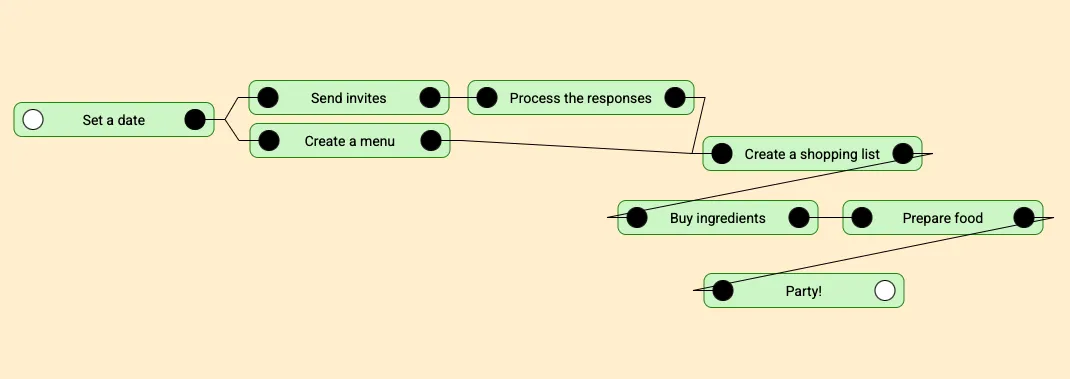Tips for tasks
The tips below are not specific to ThenNext. They work with any system. If you are looking for arguments to use, ThenNext, we recommend our main website: https://www.thennext.com
Make it an Action
A well-crafted task should always include a verb, such as “write”, “create”, or “change”. Placing the verb at the beginning of the task description allows for clear communication and ease of tracking progress. For example, asking did you write the report?
is more effective than vague inquiries.
When unsure how to phrase a task, using “ensure” as a starting point can be helpful. This approach is handy for complex tasks that involve multiple steps. Instead of trying to encapsulate everything into one task, break it down or use ensure [desired outcome]
, such as ensure sales targets are met
.
Keep it Focused
Tasks should be manageable chunks of work that you can complete within a short timeframe (minutes to a few hours) without interruptions. If a task is too broad or likely to be interrupted, consider splitting it into smaller, more focused tasks. For instance, instead of having a single task like write the documentation
, break it down into individual tasks for each page or section. This approach ensures that each task remains simple and achievable.
Don’t waste time
Your time is a limited resource and is, therefore, incredibly valuable. So, don’t waste your time on tasks you can’t complete.
- Focus on what you can do now if that task is straightforward.
- Hide tasks that you can’t perform at this very moment (this is a feature of ThenNext).
- Delete or hide tasks that you are dragging along. If a task hasn’t started in the last two months, it likely won’t start anytime soon.
- Remove tasks you are unsure about or need to make a decision on.
- Or replace them with
Make a decision…
style tasks.
- Or replace them with
The idea is that you ensure you focus on the tasks that provide you some kind of value.
Connect Your Tasks
To maximize productivity and efficiency, connect your tasks in a logical sequence. This means identifying which tasks are dependent on the completion of others and ordering them accordingly. For example, when planning an event, you would typically:
- Set a date for the event
- Send out invitations to guests, but only after setting a date
- Determine a menu, but only after setting a date
- Process the responses, but only after you send the invites
- Create a shopping list, but only after you processed the responses and have determined a menu, you don’t want to buy the incorrect amount or the wrong ingredients for the menu
- Buy ingredients, but only after creating a shoppoing list
- Prepare food, but only after buying the ingredients
- Enjoy the party, which you should seeing you have done all the hard work!
By connecting your tasks in this way, you ensure that each task builds upon the previous one, reducing errors and saving time. This approach helps you stay organized and focused and achieve your goals more efficiently.
